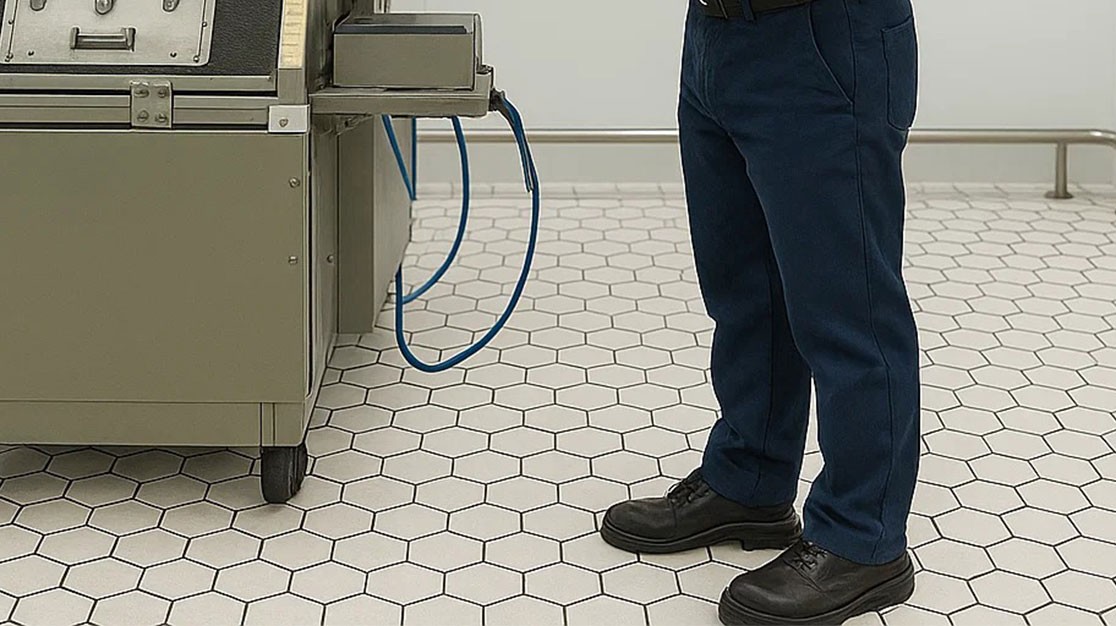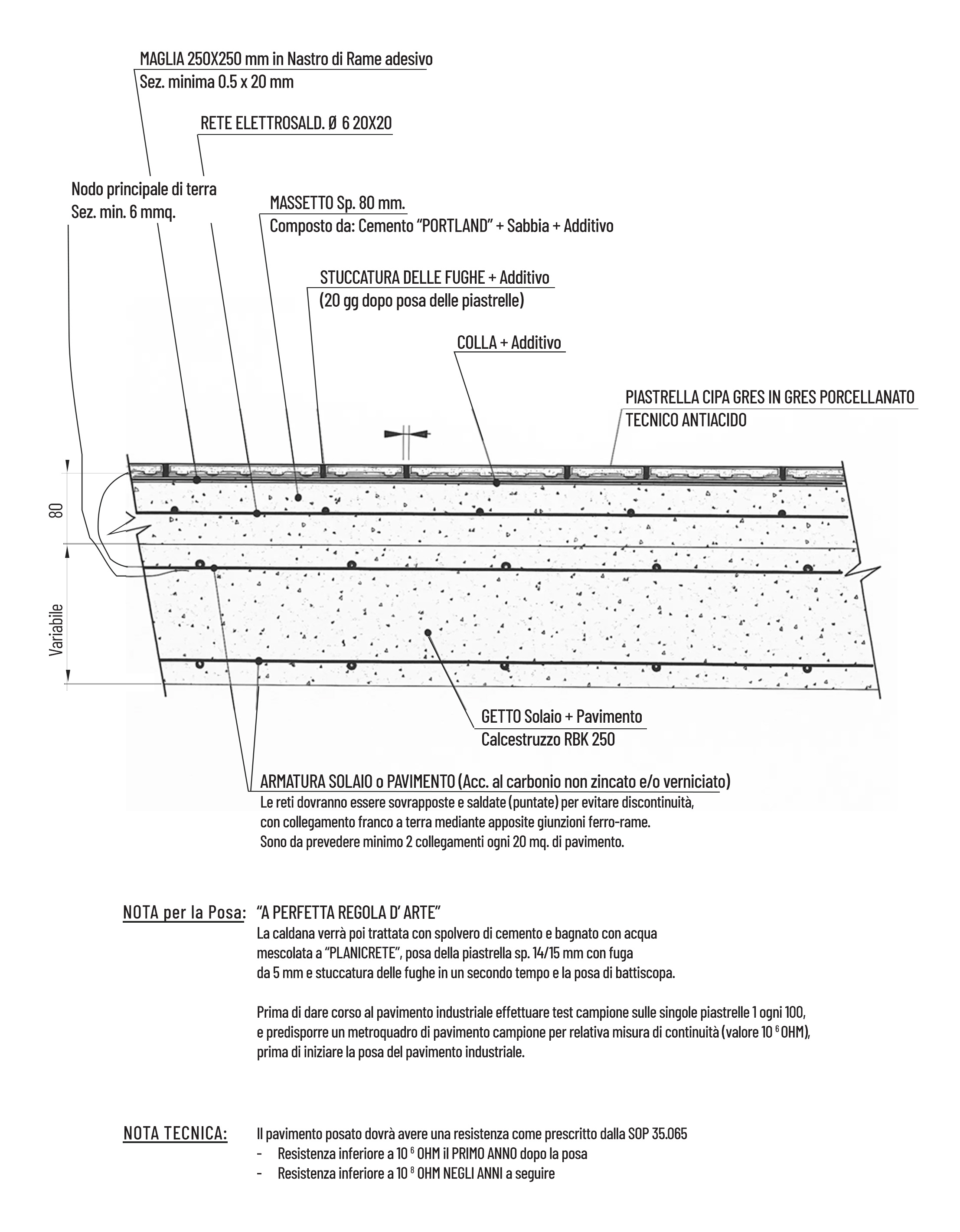
Dissipative and Conductive Flooring Systems
The flooring system with anti-acid technical porcelain stoneware finish can be designed to meet specific requirements in terms of anti-static properties, conduction and dissipation of electrostatic charges.
Due to its nature, ceramic does not promote the accumulation of electrostatic charges, which is an advantage. However, since it is not a conductive material, it cannot on its own ensure controlled discharge dissipation. To address this need, Cipa Gres has tested an anti-static flooring system particularly suitable for industrial, electronic, medical, pharmaceutical or logistics environments. The system combines the hygiene and mechanical resistance of anti-acid technical porcelain stoneware with anti-static, dissipative and conductive properties. Cipa Gres has developed a flooring system suitable for the control of electrostatic discharges (ESD).
ESD Flooring Classification
Depending on the surface or vertical electrical resistance, floorings are classified as follows:
- Anti-static floors
Limit the generation of electrostatic charge during walking.
- Maximum voltage generated: < 2,000 V
- Dissipative floors
Allow the gradual discharge of the charge to ground.- Electrical resistance: 10⁵ Ω < R < 10⁹ Ω
- Conductive floors
Allow for rapid conduction of the accumulated charge to the grounding system.
- Electrical resistance: R < 10⁶ Ω
Anti-static, dissipative and conductive floors are mandatory in areas with a high risk of fire or explosion, such as:
- Armories.
- Fuel storage areas.
- Fireworks manufacturers.
An anti-static, dissipative and conductive floor is also recommended in all areas where high-precision electronic machinery is in use, such as:
- Hospitals (operating rooms, medical gas distribution system areas, sterile zones).
- Data processing centers and server rooms (DPCs).
- Ink and glue industries.
- Paint booths, paint manufacturers.
- Atex*** areas within production environments, or more generally, wherever anti-static flooring is required.
***ATEX is the abbreviation for “ATmosphère EXplosible”, and refers to the European Directive 94/9/EC concerning the placing on the market of explosion-proof electrical and mechanical devices, components and protection systems.
Reference Standards
The ESD characteristics of technical flooring are regulated by national and international standards, including:
- CEI 64-4: insulation resistance measurement.
- EN 61340-5-1: protection of electronic components from electrostatic effects.
- EN 61340-4-5: requirements for the person-footwear-flooring system.
Performance Verification
The flooring system made with ESAGONA HI TECH 14 mm was subjected to insulation resistance tests at Centro Ceramico (Test Report No. 5451/24), obtaining a dissipative classification:
- Test method: CEI 64-4.
- Environmental conditions: 23°C – 50% RH.
- Measured values: 10⁷ < R < 10⁸ Ohm.
![]() DOWNLOAD THE TEST RESULT PDF HERE
DOWNLOAD THE TEST RESULT PDF HERE

